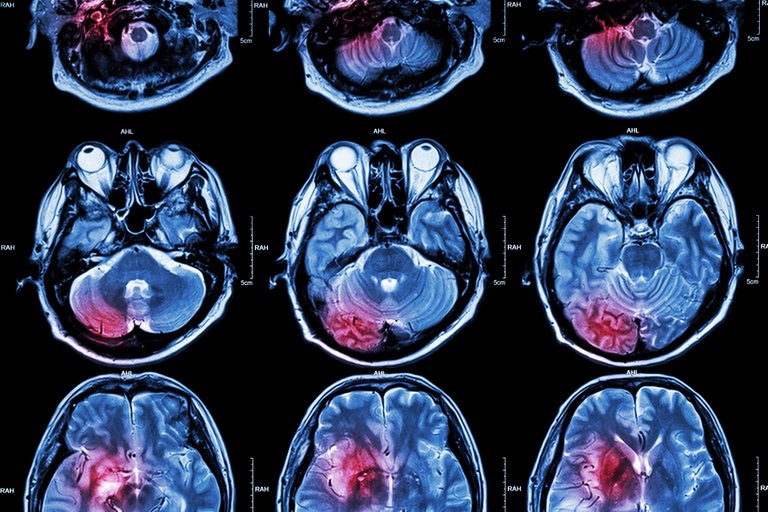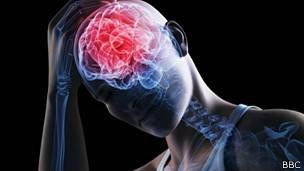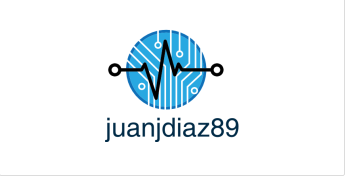Hello friends of Steemit Today I come to talk about stroke
Stroke is a type of cerebrovascular disease, that is, a disease that affects the blood vessels that irrigate the brain. Symptoms can appear gradually or suddenly, but the underlying causes of a stroke are usually present many years ago.
Most strokes occur in people over 65 years of age. Although many of them occur without prior warning, there are certain physical symptoms that can warn us that we are suffering from a stroke
Today I want that the first part is the story, is important addition as all the information that will be given here.

History
The history of CVD is very old, Hippocrates considered the father of medicine, he recognized and wrote, to the neurologists' pride, about the stroke more than 2,400 years ago. Then and until relatively recently, the stroke or cerebral hemorrhage was called "apoplexy", which means in Greek "violent attack". This was because the patient suddenly suffered paralysis and a radical change in their well-being, almost always final and fatal. They were times in which doctors had little knowledge about the anatomy and functioning of the nervous system, the causes of the disease they were facing, and much lessHe knew how to treat her.
How the Stroke begins to act

Stroke is a brain injury that can also seriously affect the body. It occurs when the blood supply to a part of the brain is interrupted or when blood is spilled into or around the brain.
The brain is a large mass of soft tissue made up of billions of nerve cells. It is the main control center of the organism and allows us to see, hear, taste, smell, speak and walk. It is also the center of control of thoughts, emotions, memory, judgment and conscience.
The nerve cells in the brain need a constant supply of oxygen and sugar (glucose), which are transported by the blood. When the blood can not reach certain parts of the brain, the supply of oxygen to these areas is interrupted. This is called ischemia. Without oxygen, brain cells die. The longer the brain is deprived of blood, the more serious the brain damage will be. The zone of dead tissue caused by ischemia is called infarction.
A stroke is a medical emergency. It is essential that an immediate treatment be carried out. Early action can minimize brain damage and the possibility of complications.
The good news is that strokes can be treated and prevented, and that a significantly lower number of Americans die because of them today than they did 15 years ago.
Characteristics of the stroke
There are two main types of stroke or stroke: an ischemic stroke is caused by a blockage; A hemorrhagic stroke is caused by the rupture of a blood vessel. Both types of strokes deprive a part of the brain of blood and oxygen, which causes the death of brain cells.
Ischemic stroke
Approximately 85 percent of strokes are ischemic. Ischemic strokes occur when there is a narrowing or blockage of the arteries that go to the brain, which causes a severe reduction of blood flow (ischemia). Some of the most frequent blows are:
- Thrombotic tracing. It occurs when a blood clot (thrombus) forms in one of the arteries that supplies blood to the brain. A blood clot can be made up of deposits of fat (plaque) that build up in the arteries and cause a reduction in blood flow (atherosclerosis) or other diseases of the arteries.
- Embolic stroke. It occurs when a blood clot or other particles form far from the brain, often in the heart, and travel through the bloodstream to lodge in the narrower cerebral arteries. This type of blood clot is called a "plunger."
Brain-vascular hemorrhagic accident
Hemorrhagic stroke occurs when there is a loss of blood or a cut in a blood vessel in the brain. Cerebral hemorrhages can be caused by many diseases that affect blood vessels, such as uncontrolled high blood pressure (hypertension), excessive treatment with anticoagulants and weak areas in the walls of blood vessels (aneurysms).
A less frequent cause of hemorrhage is the breakage of an abnormal tangle of blood vessels with weak walls (arteriovenous malformation) present at the time of birth. The types of hemorrhagic stroke are the following:
- Intracerebral hemorrhage. During an intracerebral hemorrhage, a blood vessel in the brain breaks down and blood spills into the surrounding brain tissue, damaging brain cells. Blood does not reach those brain cells in areas farther from that loss, which are also damaged.
High blood pressure, trauma, vascular malformations, the use of anticoagulant medications and other disorders can produce intracerebral hemorrhage.
- Subarachnoid hemorrhage. During a subarachnoid hemorrhage, an artery located on or near the surface of the brain ruptures and blood spills into the space between the surface of the brain and the skull. This bleeding is usually accompanied by a sudden and severe headache symptom.
Subarachnoid hemorrhage usually occurs as a result of the rupture of the sac or berry diverticulum in an artery known as an "aneurysm." After bleeding, the blood vessels in the brain can expand and narrow in an unpredictable manner (vasospasm), causing brain cells to become damaged by further restricting blood flow.
What symptoms can be presented
The faster you can get a diagnosis and treatment for a stroke, the better your prognosis will be. For this reason, it is important to understand and recognize the symptoms of a stroke.
Stroke symptoms include:
- dificulty to walk
- dizziness
- loss of balance and coordination
- difficulty speaking or understanding others who are speaking
- numbness or paralysis of the face, leg or arm, most likely on only one side of the body
- blurred or obscured visiona sudden headache, especially when accompanied by nausea, vomiting or dizziness
The symptoms of a stroke can vary depending on the individual and the place in the brain in which it happened. Symptoms usually appear suddenly, even if they are not very serious, and may get worse over time.
There are several complications

A stroke can, on occasion, produce temporary or permanent disabilities, depending on the amount of time the brain does not receive blood flow and from which part it has been affected. The complications can be the following:
- Paralysis or loss of muscle movement. Paralysis of one side of the body may occur or control of certain muscles may be lost, such as those on one side of the face or arm. Physiotherapy can help resume activities hindered by paralysis, such as walking, eating or dressing.
- Difficulty speaking or swallowing A stroke can cause you to have less control over how the muscles of the mouth and throat move, which can make it difficult for you to speak clearly (dysarthria), swallowing or comas (dysphagia). You may also have difficulty with language (aphasia), even to speak or understand what someone says, reads or writes. A therapy with a speech and language pathologist may be useful.
- Memory loss or reasoning difficulties. Many people who have had strokes have memory loss. Others have difficulties to think, make judgments, reason and understand concepts.
- Emotional problems. People who have had strokes may have difficulty controlling their emotions, or they may manifest depression.
- Pain. People who have had strokes may experience pain, numbness, or other strange sensations in parts of the body that were affected by the stroke. For example, if a stroke causes the sensation in the left arm to be lost, the patient may begin to feel an uncomfortable tingling sensation in that arm.
Relevant Information
There are many risk factors for stroke, such as diabetes, atrial fibrillation, and hypertension (high blood pressure).
Consequently, there are many steps you can take to help prevent stroke. The preventive measures for stroke are similar to the actions you would take to help prevent heart disease. Here are some ways to reduce your risk:
- Keep your blood pressure normal.
- Limit the intake of saturated fats and cholesterol.
- Refrain from smoking and drinking alcohol in moderation.
- Control diabetes
- Keep a healthy weight.
- Exercise regularly.
- Eat a diet rich in vegetables and fruits.
Your health care provider can prescribe medications to prevent stroke if they know you are at risk. Possible preventive medications for stroke include medications that dilute
CONCERNED STUDY: A PERSON WILL DIE BY TIME OF A CEREBROVASCULAR ACCIDENT IN 2018

I'm used to posting news that make us happy the day, until this moment, which we have to start doing a little more aware of all these issues.
In Chile, the statistics indicate that every hour a person dies from Stroke Stroke (CVA) calculated based on the 9,004 deaths registered by the Ministry of Health in 2013. The best way to save yourself is to go to the emergency service before any symptom in face, face or speech.
The chef and jury of Master Chef, Ennio Carota, suffered an ACV a few weeks ago, of which he survived without sequels.
It is very important that in case of any ACV symptom the person is quickly transferred to an emergency service, since the doctors have a maximum of 6 hours to intervene, 3 if the person is over 80 years old.
I leave the link so they can continue reporting.
http://lanacion.cl/2018/01/04/preocupante-estudio-una-persona-morira-por-hora-de-un-accidente-cerebrovascular-en-2018/Conclusion
If you have any of these symptoms, you should go quickly to a hospital to start treatment. Acute stroke therapy tries to stop the effusion by dissolving the clot or controlling the bleeding. Post-stroke rehabilitation helps people overcome the disabilities caused by the stroke. Medical therapy with anticoagulants and antiplatelets is the most common treatment for stroke.
Here below I will leave a video where it is explained more directly
Ref Information
Thank you for taking the time to read this publication. I hope you have a happy day, see you in the next. Do not forget to leave a comment about what you thought, thank you very much.@juanjdiaz89






Being A SteemStem Member
An extremely insightful article! Thanks for sharing.
Interesting posts.